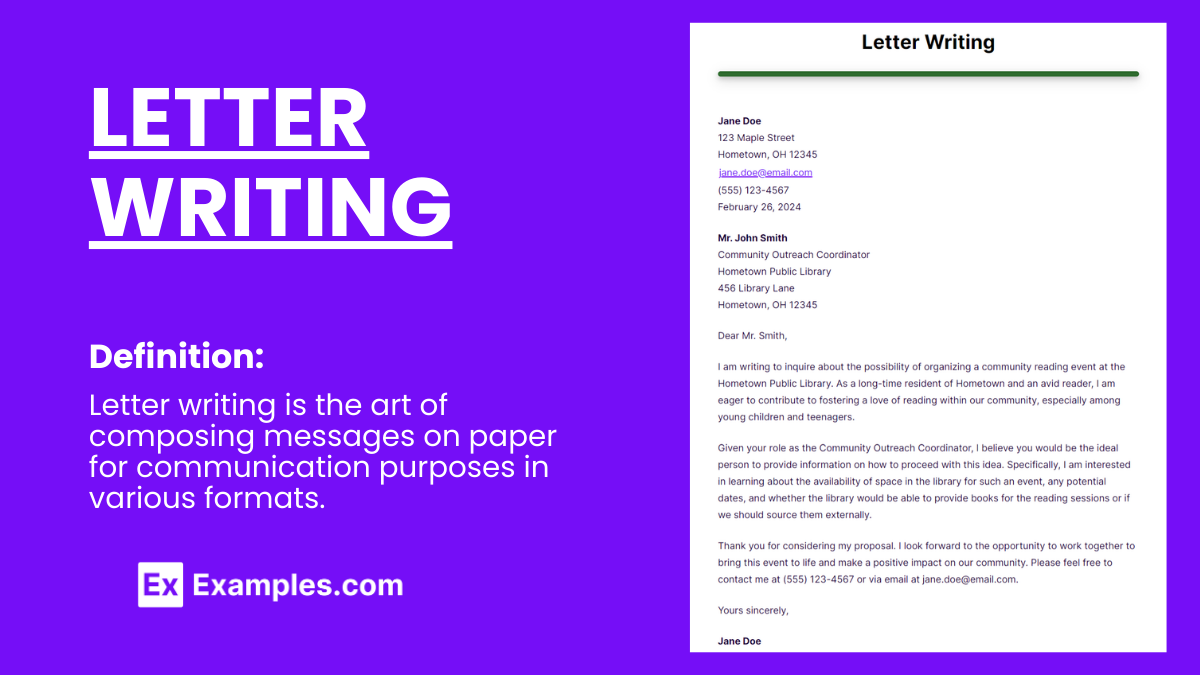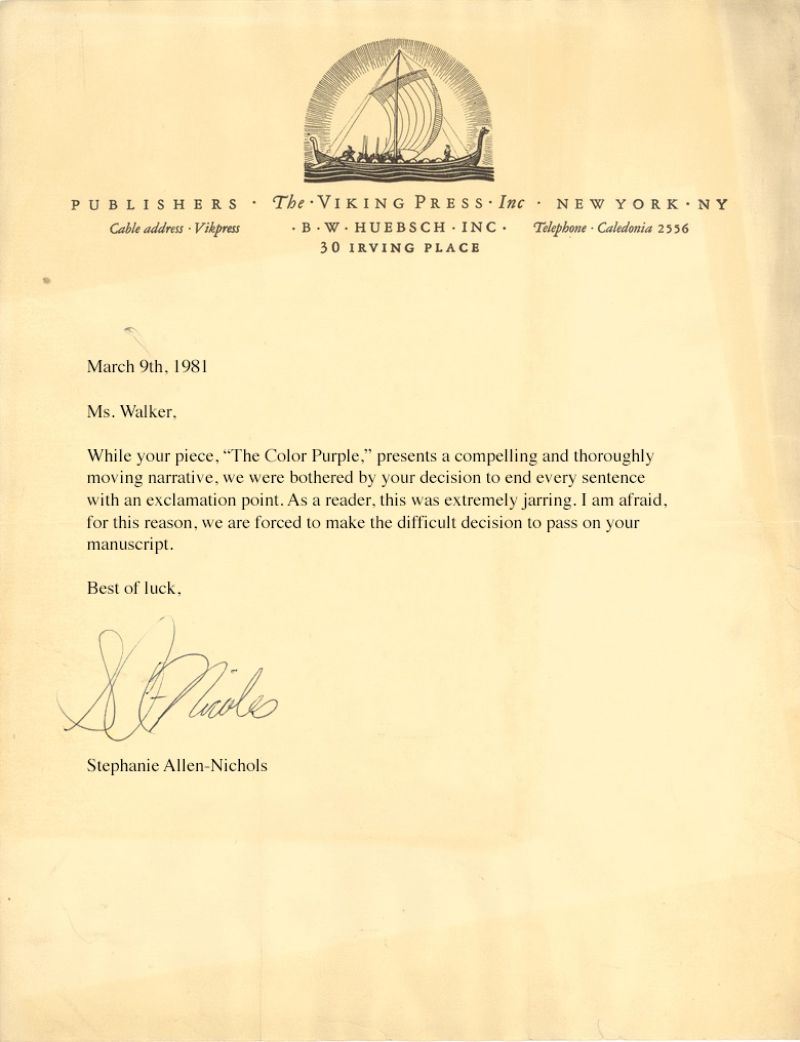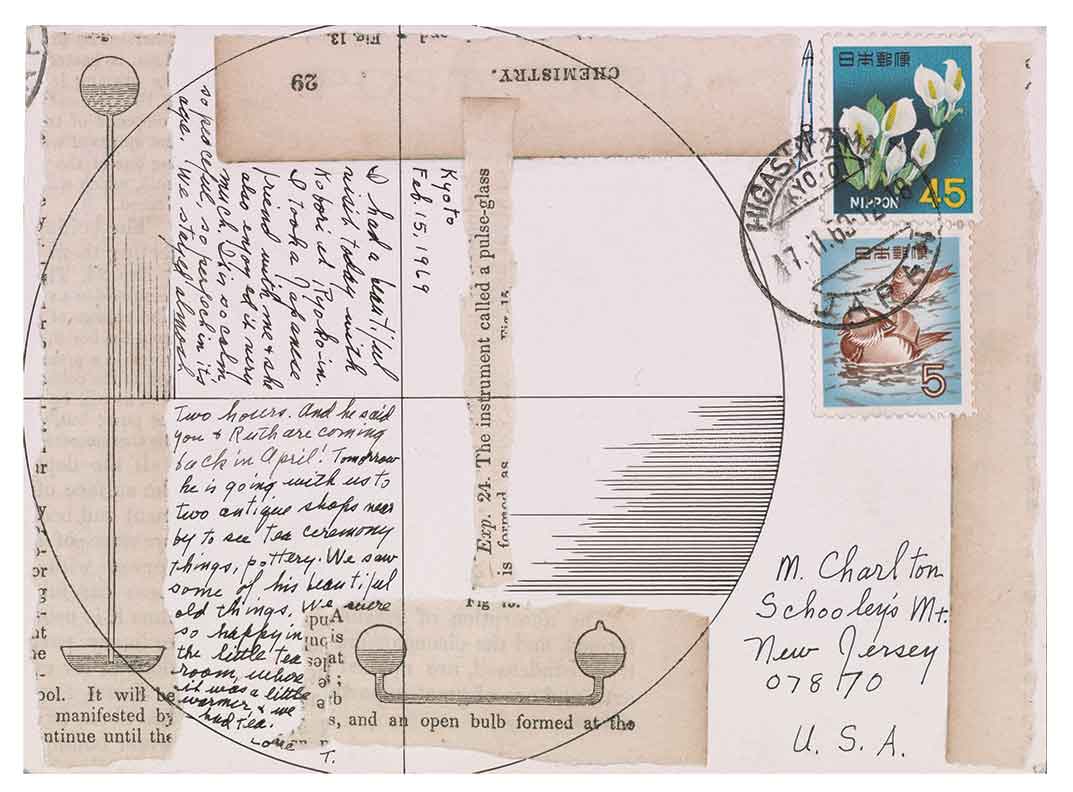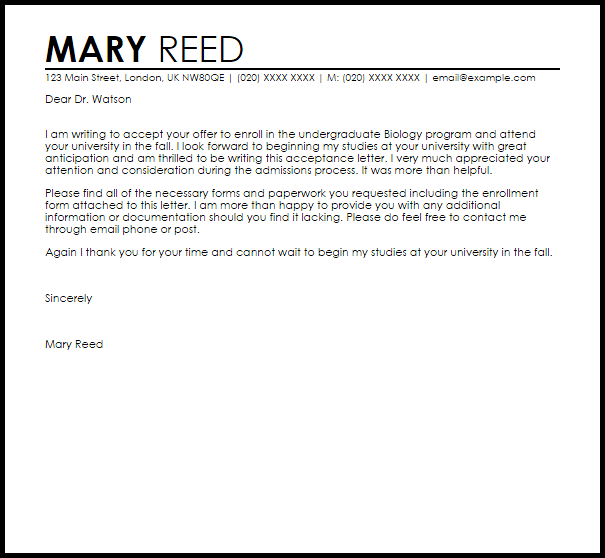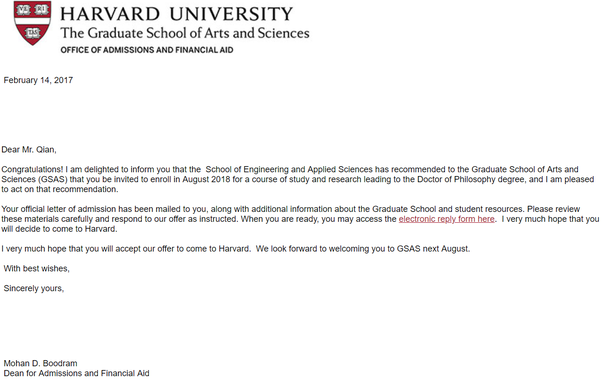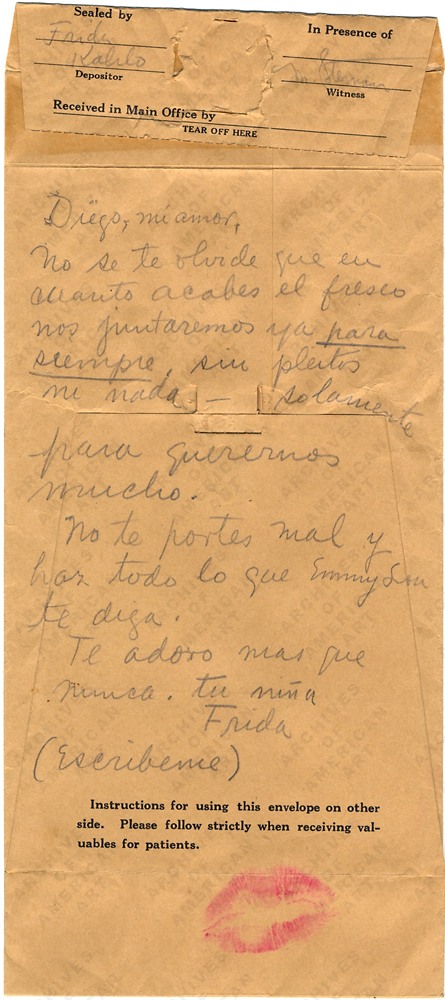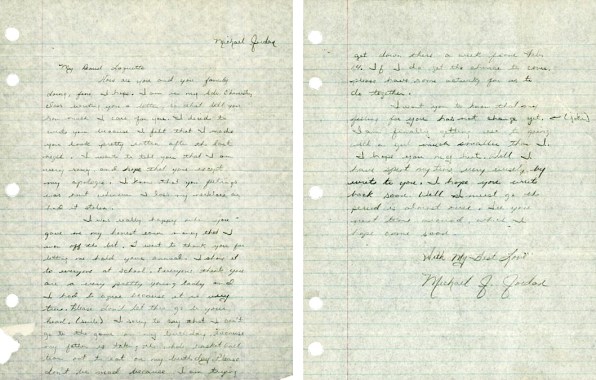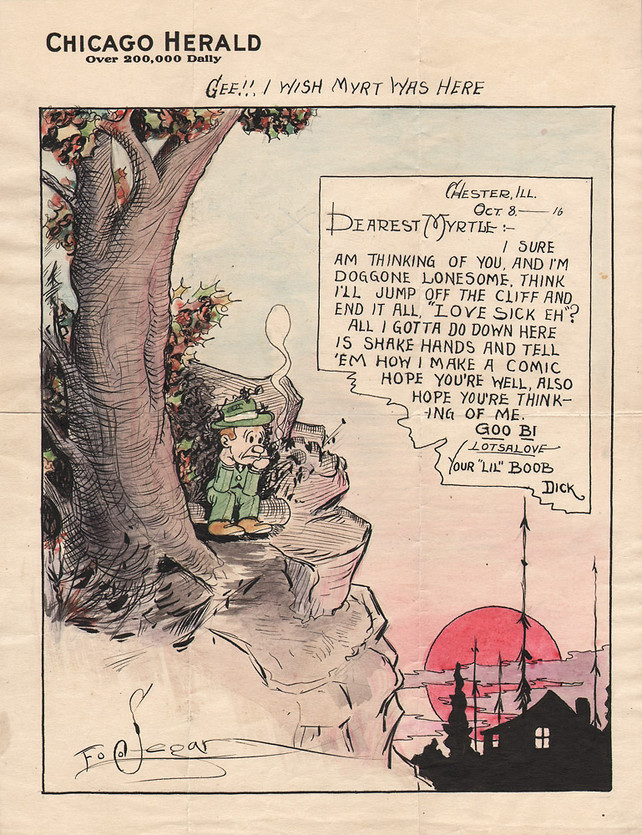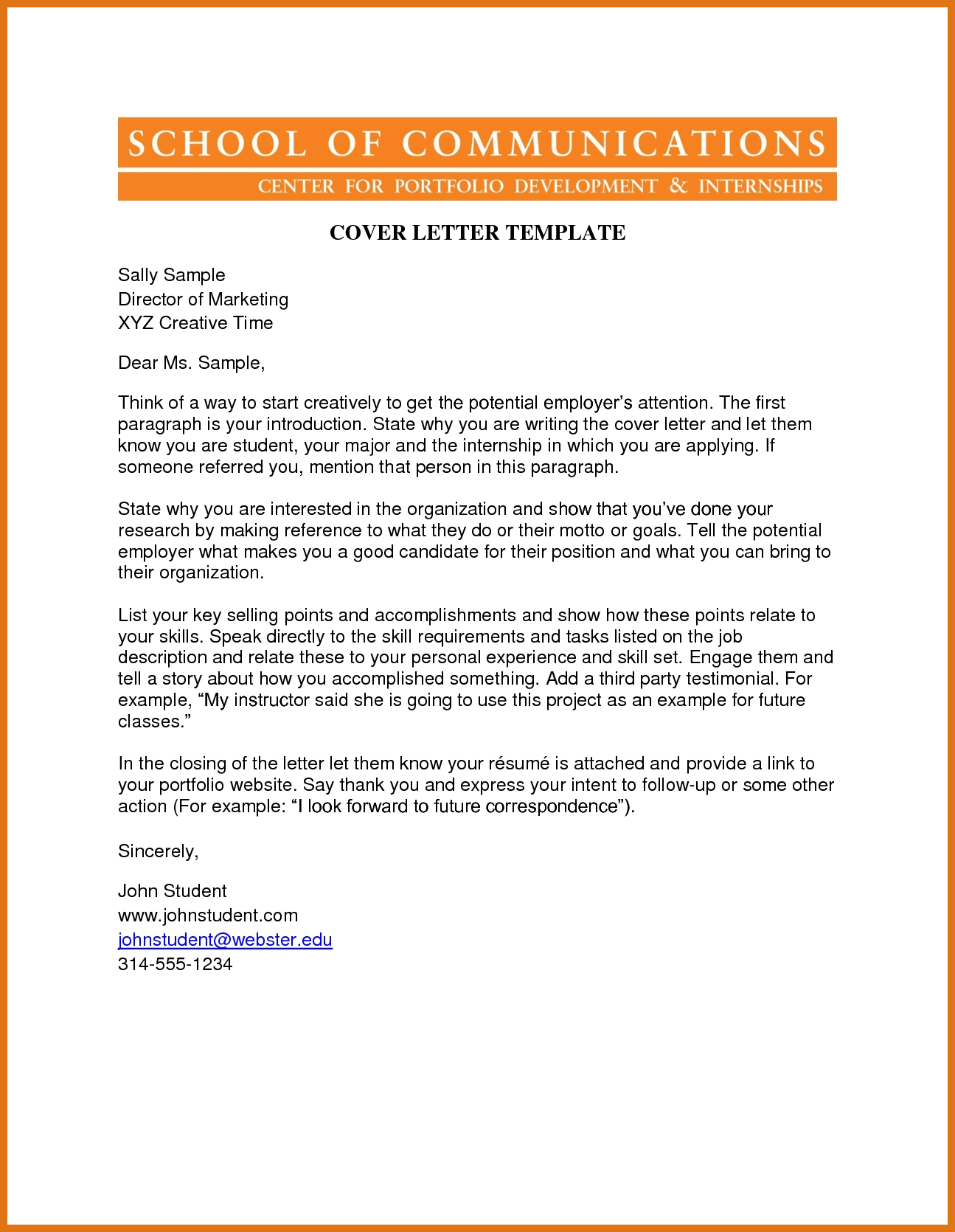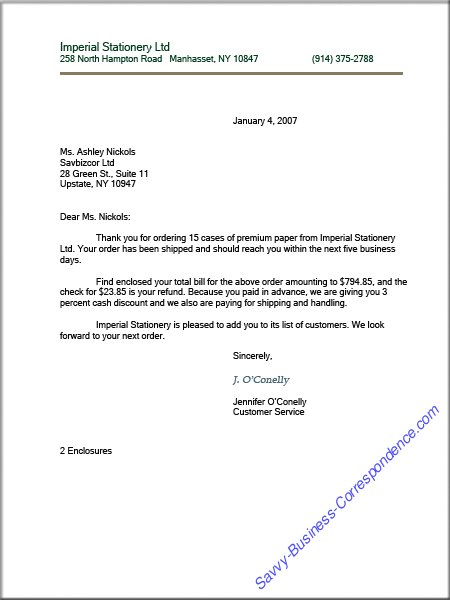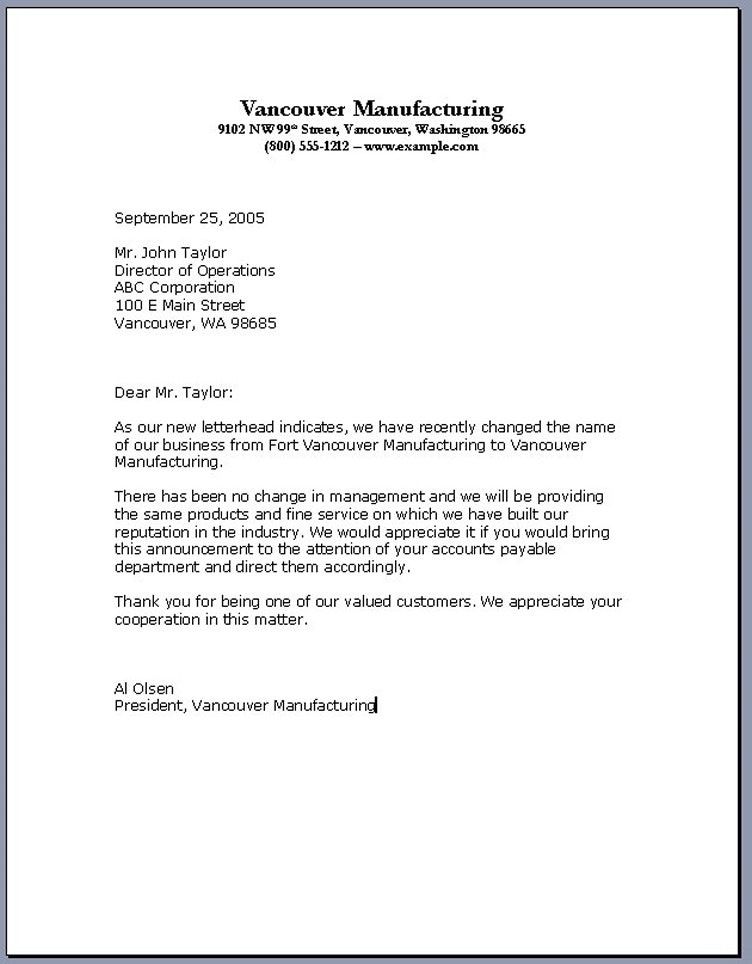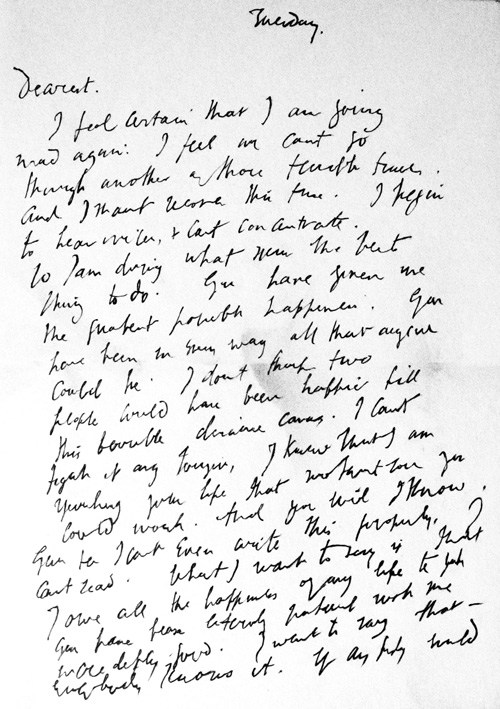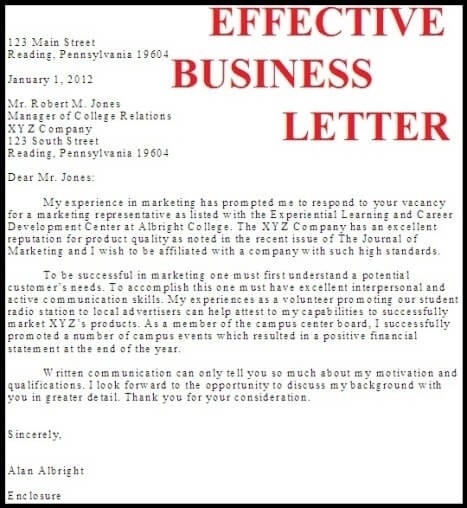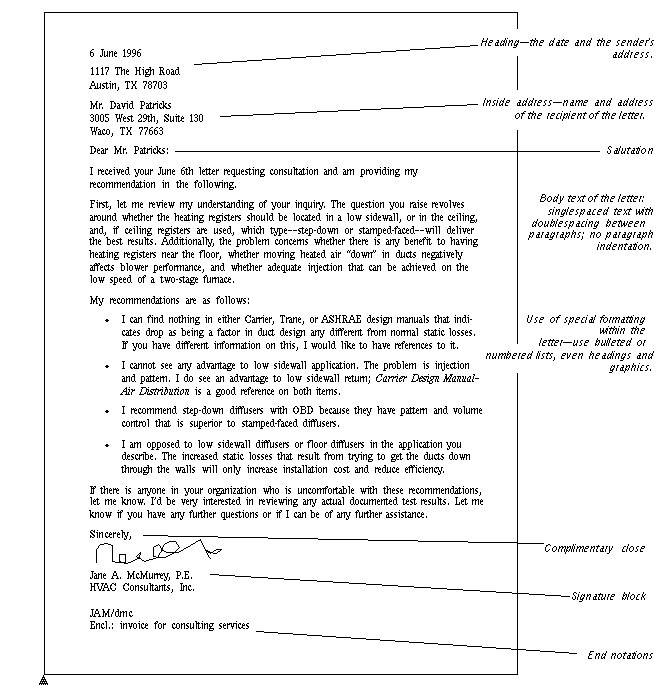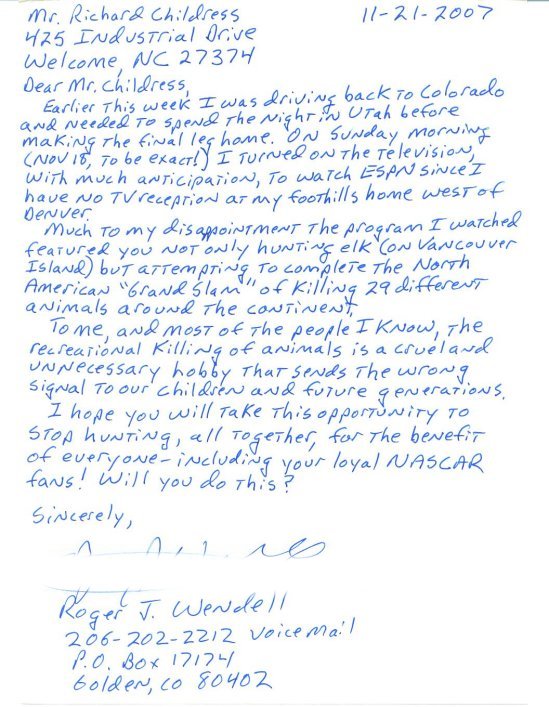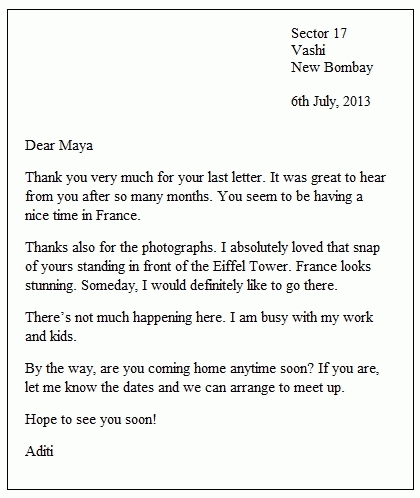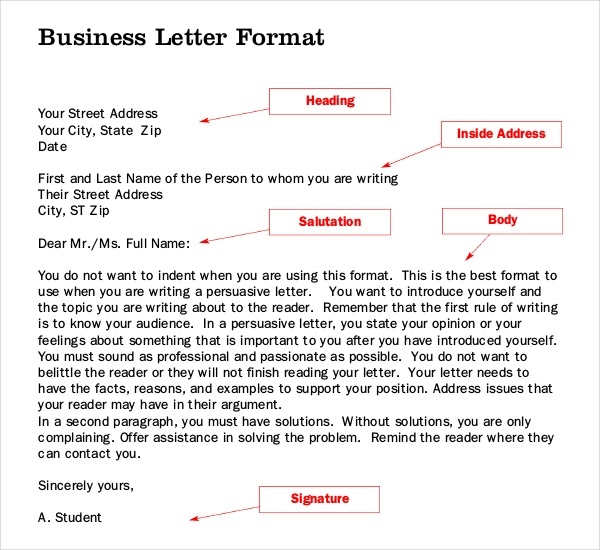Letter Writing
As you may already know, letter writing is a medium that can be used to exchange printed notes. It is simply the act of handwriting your message on a piece of paper. Letter writing is considered to be divided into two categories: personal letters (exchanged between family members, friends, or lovers) and business letters (used in formal, nonverbal correspondence with colleagues and associates).
As outmoded as this may now seem in a generation completely eaten by virtual communication, there are simply some things that nothing but a good ole letter can properly say.
People may not realize it but letter writing has a big contribution in maintaining and protecting literacy. It keeps all of us, or at least those who still practice it, grounded on the same art that our ancestors have been so adept at. You may also see formal letters examples for students.
Letter writing helps us avoid being under the bondage of computers and machines who claim that they can do the thinking, writing, and sending for us. It makes every correspondence more personal because we took the time to do it ourselves. Letter writing also brings us back to simpler times when we didn’t need a special occasion or a business conveyance to send a handwritten letter. You may also like notice letter examples.
What is Letter Writing?
Letter writing is the process of creating a written message from one person to another. It involves expressing thoughts, sharing information, or conveying feelings on paper or digitally. This traditional form of communication can range from personal letters between friends and family to more formal letters, such as business correspondence, requests, or official notices. Despite the rise of digital communication, letter writing remains a valued skill for its personal touch and the ability to convey deeper sentiment and professionalism.
Letter Writing Format
Sender’s Address
Street Address
City, State, Zip Code
Email Address
Phone Number
Date
Recipient’s Address (for formal letters)
Name/Title of Recipient
Company/Organization Name
Street Address
City, State, Zip Code
Salutation
Dear Recipient’s Name/Title,
Body
Paragraph 1: Introduction
Introduce the purpose of your letter in a clear and concise manner.
Paragraph 2: Main Content
Provide the main information, details, requests, or questions. This section can be several paragraphs long, depending on the content.
Paragraph 3: Conclusion
Summarize your letter, restate the main point, or include a call to action.
Closing
Your Name (typed for formal letters)
Signature (for a handwritten letter)
Example of Letter Writing
Free Download in Word Free Download in PDFJane Doe
123 Maple Street
Hometown, OH 12345
jane.doe@email.com
(555) 123-4567
February 26, 2024
Mr. John Smith
Community Outreach Coordinator
Hometown Public Library
456 Library Lane
Hometown, OH 12345
Dear Mr. Smith,
I am writing to inquire about the possibility of organizing a community reading event at the Hometown Public Library. As a long-time resident of Hometown and an avid reader, I am eager to contribute to fostering a love of reading within our community, especially among young children and teenagers.
Given your role as the Community Outreach Coordinator, I believe you would be the ideal person to provide information on how to proceed with this idea. Specifically, I am interested in learning about the availability of space in the library for such an event, any potential dates, and whether the library would be able to provide books for the reading sessions or if we should source them externally. Additionally, I would appreciate guidance on how to collaborate with the library on promoting the event to maximize community participation.
I am hopeful that this event could not only encourage reading among our youth but also strengthen community bonds. I am open to any suggestions you may have on making this event a success and am willing to meet at your earliest convenience to discuss this further.
Thank you for considering my proposal. I look forward to the opportunity to work together to bring this event to life and make a positive impact on our community. Please feel free to contact me at (555) 123-4567 or via email at jane.doe@email.com.
Yours sincerely,
Jane Doe
Business Letter Example for Students
Free Download in Word Free Download in PDFAlex Johnson
Student, Business Administration
University of Hometown
123 College Street
Hometown, HT 67890
alex.johnson@email.com
(555) 987-6543
February 26, 2024
Ms. Samantha Green
Internship Coordinator
Innovative Solutions Inc.
789 Corporate Blvd.
Tech City, TC 12345
Dear Ms. Green,
I am writing to express my interest in the summer internship program at Innovative Solutions Inc., specifically within the Marketing Department. As a junior pursuing a Bachelor’s degree in Business Administration with a concentration in Marketing at the University of Hometown, I am eager to apply the concepts I have learned in the classroom to real-world situations. Additionally, I am interested in learning more about Innovative Solutions Inc.’s approach to digital marketing and market analysis.
Through my academic coursework and participation in university-sponsored marketing competitions, I have gained a solid foundation in marketing principles, digital advertising, and strategic planning. I am particularly fascinated by your company’s innovative use of data analytics to drive marketing strategies and would welcome the opportunity to contribute to such projects.
Could you please provide more information about the application process for your internship program? I am particularly interested in any prerequisites, the selection criteria, and any documents or materials that I should include with my application. Furthermore, I would appreciate any advice you could offer to a prospective intern on how to stand out in the application process.
Thank you for considering my inquiry. I am very enthusiastic about the possibility of joining Innovative Solutions Inc. as an intern and am keen to bring my skills and passion for marketing to your esteemed team. I look forward to the opportunity to discuss how I can contribute to your department and learn from the best in the industry.
Yours sincerely,
Alex Johnson
Letter Writing Examples & Templates
Rejection Letter Sent to Walker
Handcrafted Postcard and Letter by Lenore Tawney
Business Letter Format
Business Request Letter Example
Official Business Letter Example
School Acceptance Letter
Harvard University Acceptance Letter Example
Handwritten Letter by Frida Kahlo
Apology Letter Written by Michael Jordan
Handwritten Letter by Popeye’s Cartoonist
Modified Business Letter Example
Cover Letter Example
Semi-Block Format Business Letter Example
Unique Cover Letter Example
Business Letter Sample
Rejection Letter Sent to Steinbeck
Business Letter Content Example
Virginia Woolf’s Suicide Letter
Effective Business Letter Example
Business Letter Example
Handwritten Letter Example
Informal Letter Example
Parts of a Letter
Formal Letter Example
In itself, letter writing is an art. The simple act of seeing words carefully strewn together on one page is mesmerizing in a way that is difficult to explain. Unfortunately, after the birth of the telegraph and the telephone, people have started abandoning letter writing for means that are more convenient for them. You may also see business proposal letter examples.
Letter writing is also considered a social and business asset. It helps one develop his nonverbal communication skills which, if you haven’t learned yet, is just as important as verbal communication prowess. The skill to write a quality letter is just as important as the skill to hold a meaningful conversation. Whether in the corporate world or in someone’s social circle, constructing a well-made letter is something that you can be proud of. You may also like email cover letter examples.
Why Is Letter Writing Still Important in Today’s Generation?
Most people would dismiss letter writing as a waste of time, pen, and paper because why would you choose to write something if you can type it instead? To answer these flawed arguments only cynics would make, here is a short list of all the great things that this generation would miss out on if we completely let go of the innocent act of letter writing:
For personal letters
1. Tangibility matters.
This is one of the great things about professional letters that no amount of printing digital messages can ever compete with. The sensation of holding a carefully folded handwritten letter on your lap gives the sweetly wonderful feeling of being important. Someone took the time to write that very thing you are holding. Someone thinks you are important enough that you deserve more than a few words typed on a computer.
No amount of long emails can ever rise up to that. Plus, letters are the perfect keepsake. You can simply keep one on a box under your closet and take it out every time you feel like reminiscing. That letter can embody the memories you share with a person. It will never fail to remind you that, at some point, you became so close to someone that he felt that you deserve nothing less than something personalized by him. You may also see complaint letter examples & samples.
2. Letter writing will require thinking.
This would mean that there is a smaller probability of you saying something you don’t mean. A great disadvantage of instant communication in the form of texts or chats is that you rarely have time to think about what you’re going to say. And in the middle of an emotional outbreak, this can lead to you saying things you want to take back but can’t. You may also like thank-you letter examples.
Letter writing will give you the chance to really think about what you want to say to a person. This may include a long apology, an expression of love, or even just asking how the other person is. You can reread your letter over and over until you become satisfied that the content expresses exactly what you feel. You may also check out offer letter examples.
3. Letter writing will help you practice your penmanship.
Back in the days, the better your penmanship is, the cooler you are. Unfortunately, since keyboards have taken the place of pens, we may rarely have the chance to practice and better our handwriting. Letters can help solve this dilemma. Letters would, of course, need to be handwritten, which means that you can use writing letters to practice your penmanship as well. You might be interested in recommendation letter examples & samples.
4. Letters hold a lot of memories.
If you’ve never tried rereading letters you have received from a long time ago, then you are missing out on so many things. There are a lot of memories that one single paper can hold. And it’s not even wholly about the sender of the letter or its purpose. You may also see employee reference letter samples.
Reading a letter, especially one that you’ve received from a long time ago, will remind you of the absurdities, all of it memorable, that you took part in. A letter is your own version of documentation. The only difference is that it is more personal and honest. Who wouldn’t want that?
5. Letters improve relationships.
This damned busy life seems to be keen on keeping everyone apart.
Letters can help you fight that. Although they take more time than a normal text would need, they are better at encapsulating your presence than digital communication ever will. And when it comes to long distance friendships and relationships, this is what you would want your message to accomplish: for it to hold so much of you that the person you sent the message to could feel your existence close to them. You may also like incident report letter examples.
6. Letter writing encourages creativity.
Digital communication highlights the chance to edit. Although this is a positive trait, it can also discourage the free flow of words which is essential in letting creativity out unhindered. (In fact, writing without pausing to edit is a literary writing style known as stream of consciousness that highlights the importance of letting words out without the slightest inhibition.) You may also check out acknowledgement letter examples & samples.
Also, the act of letter writing will make you want to use words that are more than the normal ones you use every day because you are trying to say something important and special to someone who is worth just as much.
7. Letter writing identifies your writing style.
Every individual has a writing style, whether or not they have discovered it already. They have a way of saying things that is distinctive to them. This is an attribute that can only be made visible in writing. Sure, professional emails and texts are also considered writing, but people commonly use jargon in them which just defeats the purpose of allowing your personal touch in your writing to stir. If you want to discover your personal writing style, write a letter.
For business letters
1. A letter can provide physical proof, without the need for printing, that a communication did take place. Plus, letters are usually signed by the sender. This makes it a more valuable and a more believable form of evidence, should the need arise, in comparison to emails that are so easy to fake or duplicate. You may also see complaint letter examples.
2. A letter expresses sincerity more effectively. It can send the message that the sender genuinely wants to create a mutualistic professional relationship with the receiver. This is very helpful in creating ties with other people in the business world. It can help you avoid seeming distant and aloof, which is how people automatically view corporate men, since letters are very personal. You may also like official resignation letter examples.
Letters also represent your company. This will also give your business a good image without trying too hard.
3. Other documents can also be enclosed along with your letter. This is an additional advantage you can make use of especially when you are trying to send confidential papers that are not meant for anybody else’s eyes. Yes, simply attaching the document you want to your email is easier but you can’t just trust the Internet with everything. You may also check out business proposal cover letter examples.
With all its advantages and help, the Internet is still a big world full of strangers who may or may not have any malicious motives. Avoid all of that by sticking to the traditional and the safe.
4. Letters are also better at keeping secrets more than a computer ever will. Even if you put a password for every button to be clicked, your computer privacy is always, always going to be in danger of being trespassed.
A letter, on the other hand, would need more effort than it would take to hack into someone else’s computer because, firstly, the fact that someone has sent a letter can be easier to keep private. And if you can’t get through that, what are your chances to get a hold of the letter? You might be interested in complaint letter to service provider examples.
5. The ideas written on a letter are more clear and defined than those written on emails. Because letters take longer to make, it gives the sender of it a longer chance to construct the message and make sure that there are no vague ideas stated. Plus, letters take longer than formal emails to reach the receiver. Why would anyone write someone a letter and not express his message in detail knowing that it would just be a waste of time?
6. Letters are cheap. Let’s face it. Your monthly fee for Internet connection could already buy a lot of pens and papers that could give you more than a month of vigorous letter writing. These are not only secure and personal, they are also very cost effective. And for startup businesses and small firms, you need to save every penny you can. This is a fact that USA and UK have discovered first.
An idea that the rest of the world has started to embrace as well. This popularity brought about the emergence of different styles of writing business letters which have made letter writing as a medium in corporate correspondence more widely accepted.
7. Corresponding through letters is one of the most versatile form of communication. There will always come a time in your business’s life where you will be faced with an issue that needs to be discussed in person. When you both don’t have the time to meet, you can use a letter to express the important aspects of the issue. For sensitive matters, virtual communication may not prove itself the man for the job. You may also see how not to write a business letter.
In cases like this, you can rely on the traditional to hold your most confidential messages without seeming inappropriate.
How to Write a Letter
1. Decide the Type of Letter You Need to Write
- Formal Letters are written for professional or official purposes, such as job applications, business inquiries, or formal complaints.
- Informal Letters are personal letters written to friends or family, often without strict format requirements.
2. Start with Your Address and Date
- At the top left corner of the page, write your full address and below it, the date. This is crucial for formal letters and optional for informal ones.
3. Add the Recipient’s Address (For Formal Letters)
- Skip a line after the date and write the recipient’s full address on the left side of the page. This should include their name, title, company name, and full address.
4. Choose a Salutation
- For formal letters, use “Dear [Title and Last Name],” or “Dear Sir/Madam,” if you don’t know the name.
- For informal letters, a simple “Dear [First Name],” or even just the recipient’s name is appropriate.
5. Write the Body of Your Letter
- Introduction: Briefly mention the purpose of your letter.
- Main Content: Provide details about what you’re writing. For formal letters, keep the tone professional and to the point. In informal letters, you can be more personal and expressive.
- Conclusion: Sum up your letter and mention any next steps or calls to action, like waiting for a reply or confirming an event.
6. Close Your Letter
- Formal letters typically end with “Yours sincerely,” (if you know the name of the person) or “Yours faithfully,” (if you don’t know the name).
- Informal letters can end with “Best wishes,” “Regards,” “Love,” or any other appropriate sign-off.
7. Sign Off
- Leave space for your signature and then type your full name below it. If it’s a formal letter and you have a professional title, include that as well.
Components of Letter Writing
1. Sender/ Writer/ Correspondent
The creator of the letter is, of course, considered the correspondent. He is the initiator of the communication, which means that he is responsible for making the message come through successfully and effectively. A correspondent, especially in writing business letters, has certain responsibilities. These include
- knowing the different types of letter writing styles and forms;
- having a good command over the English language since this is the universally accepted language in the commercial world (French only falls second). You may also see how do you address an email cover letter?;
- being able to communicate facts and details with meticulous ability since a letter’s purpose would be defeated if the message is not clearly defined;
- being familiar with the phrases and jargon unique to the commercial world since it is his duty to speak in a language familiar to his recipients. You may also like appointment letter format examples;
- having a clear purpose for writing a letter; and
- knowing the recipients enough to be able to draft a letter in a way that can relate to him.
2. Receiver/ Addressee/ Recipient
The letter that a correspondent creates is meant to communicate to a receiver. Which means that the letter is drafted with the nature of the receiver in mind. He is the reason why a letter has been created, which means that the content must appeal enough so he will want to read the message thoroughly. In comparison to the sender and his responsibilities, the receiver is not obligated to do anything after reading and receiving a letter. You may also check out simple cover letter examples.
Sending a response, if he deems it necessary, is completely up to him.
3. The Message
The main point of sending a letter is to express a message. This message can either be long or short, urgent or not, formal or informal. The message that the letter will hold should influence how the letter is written. This is a letter’s main purpose for being created, which means that the message should be expressed properly to give justice to the letter’s aim. You might be interested in termination letter examples & samples.
Types of Letter Writing
1. Formal Letters
These letters are written in a professional setting to convey official information, make requests, or express professional courtesy. They follow a strict format and formal language. Examples include:
- Business Letters: Communications between businesses or between a business and its clients, suppliers, or stakeholders.
- Official Letters: Written communications to or from government agencies or organizations.
- Job Application Letters: Letters sent by job seekers to employers, often accompanied by a resume.
- Complaint Letters: Written to express dissatisfaction or report problems regarding products or services.
- Inquiry Letters: Requests for information about products, services, or policies.
2. Informal Letters
These are personal letters written to friends, family, or acquaintances. The language is casual, and the format is flexible. Examples include:
- Friendly Letters: Casual letters to friends or family members, sharing news, asking about their well-being, or making plans.
- Thank You Letters: Expressions of gratitude towards someone for their help, gift, or kindness.
- Invitation Letters: Invites to events like weddings, birthday parties, or gatherings.
- Apology Letters: Expressing regret for a mistake or misunderstanding.
3. Semi-formal Letters
These letters fall between formal and informal letters. They are written to people you may not know personally but with whom you have a non-professional relationship. Examples include:
- Letters to Landlords: For requests, complaints, or notifications regarding rental issues.
- Letters to Neighbors: About neighborhood concerns, events, or personal matters needing attention.
4. Cover Letters
Specifically written by job applicants to introduce themselves to potential employers, highlighting their suitability for a position and complementing their resumes.
5. Recommendation and Reference Letters
Written to vouch for someone’s abilities, character, or qualifications, either for jobs, academic admissions, or other opportunities.
6. Resignation Letters
Written by employees to formally announce their decision to leave their current position.
The Process of Delivering a Letter
Here is a detailed process of how a letter will reach the receiver:
- The sender finds a reason to write a letter to someone.
- The sender writes a letter with his intended message clearly expressed in the content.
- The sender places the letter in an envelope with the receiver’s address clearly written on the middle front of the cover. He can also place his return address if he wants. You may also see how to email a resume and cover letter.
- The sender buys a postage stamp to attach to the top right corner of the front of the envelope.
- The sender puts the letter into a mailbox.
- The postal service of the sender’s county will empty the contents of the mailbox and take the letters inside to the regional sorting office.
- The regional sorting office will then sort the letters by address and postcode and deliver the letters destined to that area to the area’s post office. You may also like reference letter examples.
- The post office forwards the letters to delivery personnel so they can deliver the letters to the addresses indicated on the envelopes.
Depending on how far the recipient is from the sender, a letter can take about 3 to 4 weeks to be delivered. International mails will follow a little different mailing process because the letters will have to be transported by trains and planes. You may also check out job application letter examples.
Parts of a Business Letter
Writing a personal letter to loved ones or friends does not need to follow any specific format or hold any particular detail. You simply state what you want and be as playful and casual with it. Business letters, on the other hand, should be written with more care since these are a more formal type of communication with more official recipients. Doing otherwise might make you seem like you are not taking the correspondence seriously.
So the next time you write a business letter, here are the important parts you must never forget to include:
1. The Heading
Let’s start with the topmost part of your letter. The heading is made up of the letter’s return address. It is usually made up of two or three lines with the date stated on the last line. However, it is not always necessary to state a return address especially if you have expressed it already on the envelope’s cover. You may also see appointment letter examples & samples.
2. The Inside Address
This will include the address of the letter’s recipient. The details written here should be clear and complete. If you know the exact name of your recipient, it is best to specify in your inside address.
3. The Greeting or the Salutation
You can’t skip into the message right ahead. Of course you will have to express your greetings to the receiver of your letter. This usually comes in the form of the word Dear followed by the last name of the person.
However, if you are not sure if the recipient is male or female, just use the person’s complete name to be sure. (Even names can be ambiguous. Think about the name Leslie. That can easily be a boy’s.) The greeting should always end with a colon in business letters. You may also like writing a touching farewell letter to colleagues.
4. The Body
This will hold the most important part of the letter. So state your message in clear, printed letters. The body of a business letter should never be handwritten.
5. The Complimentary Close
This is a polite greeting to end your letter. The most commonly used complimentary close are “Respectfully yours,” “Sincerely,” “Regards,” “Cordially,” and “Yours truly.”
6. The Signature
This is the sender’s complete name usually followed by another line that states his position in the company.
Your business letter should never include a postscript. (Those are only for love letters written by lovers who just can’t be content in finishing a letter without a “P.S. I love you.) You should never forget to maintain a margin of at least one inch on all edges. Your stationery used should be an 8 1/2″ × 11” unlined stationery. You may also check out verification letter examples.
Formats and Fonts in Writing Business Letters
Formats are important to give your letter a more dignified sense of unity and order. You can’t simply throw the paragraphs haphazardly. They need to be systematically aligned through the entire letter. There are three letter writing formats you can choose from when writing a business letter:
1. Block Format
This is the most common type of business letter format because it’s both simple and classy. Your letter is sure to look easily formal with this format. Block format is characterized by using left justified throughout the whole letter. The content will be single spaced except for the spaces between paragraphs which will should be double spaced.
2. Modified Block
This is the second most used type of format because it’s almost just as simple as the block format. In the modified block, the sender and receiver’s addresses and the body of the letter will be left justified. The date and the closing, on the other hand, will start from the center point of the letter to the left. You may also see simple appointment letter examples.
3. Semi-Block
This is the least used format for business letter writing because it’s a little more tedious to follow. Each paragraph in your letter should be indented instead of left justified like the block format and the modified block.
4. Font
It is important to have your business letter printed since it would be informal to do otherwise. The font you should use is the generally accepted font Times New Roman, size 12. (Arial may also be used although TNR is most commonly the first choice.) Fonts can make the difference between looking crisp and formal, and playful and fun. For business letters, you want the former. You may also like resignation letter examples.
If you are addressing a more conservative company, it is better to follow the suggested font and not experiment with the others. However, if you know that your recipient is a little more liberal, then maybe you can be as wild with your fonts and with your whole letter in general. You may also check out how to write a relocation resignation letter.
Letters, as outdated as they may seem to a lot of people, are still an important commodity our generation, or the generation after us, couldn’t live without. The aesthetic feel that simple letters can offer is simply irreplaceable. The old ways have survived for so many centuries because every generation that came before us deemed it useful still. Let’s keep this art alive because it will keep us rooted to the old and the beautiful.


